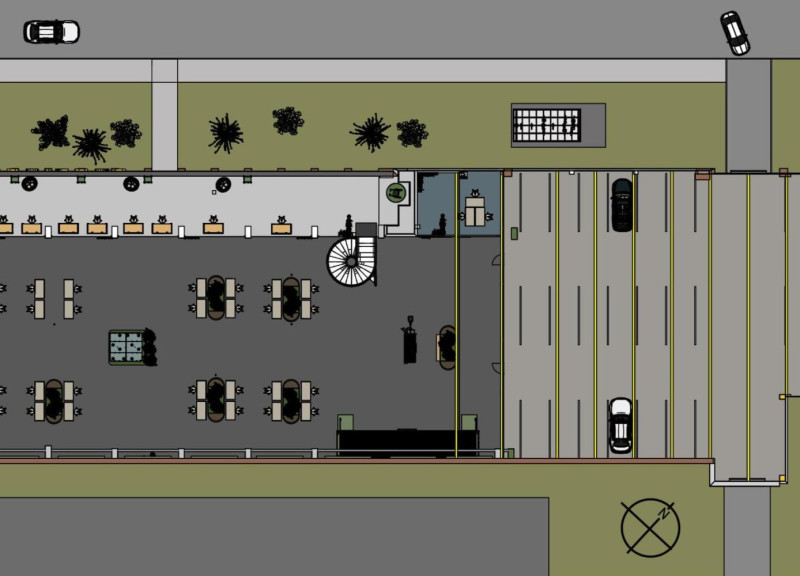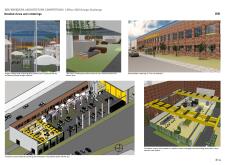5 key facts about this project
The former train repair center, Lokrichthalle, in Trier, Germany, has been creatively repurposed into a modern workspace. Built in 1911 by Prussian engineer Ernst Spiro, the building's rich industrial history has been preserved while adapting its function for contemporary needs. The design focuses on combining historical preservation with a layout that encourages collaboration and productivity among its users.
Functionality
The layout accommodates up to 40 office workers. It is designed to support both teamwork and focused individual tasks. At the heart of the design is the Eden area, which includes a kitchen and play space elevated on a platform supported by existing cranes. This unique feature promotes social interaction and maintains the industrial character of the building. Below, The Cave serves as a comfortable retreat for relaxation, enhancing the overall versatility of the workspace.
Spatial Distribution
Private offices are located in The Shell, situated along the northwestern wall. Each of the four rooms accommodates four workers, balancing the need for privacy with opportunities for collaboration. The Ground area offers open spaces for teamwork, while The Gallery provides environments suited for individual tasks. This thoughtful spatial organization caters to various working styles, fostering a productive atmosphere.
Playful Elements
The design incorporates playful features, including a climbing wall and a slide. These elements aim to encourage physical activity and create a lively office environment. By integrating these fun aspects, the design breaks away from the conventional office layout, inviting a more dynamic interaction among employees throughout their day.
Acoustic and Lighting Design
Careful consideration has been given to acoustic comfort and lighting. Movable elements known as The Clouds protect against noise while allowing for adjustable lighting throughout the space. This flexibility meets the different needs of workers, contributing to an atmosphere that enhances focus and overall productivity.
The project preserves the original brick walls and structural elements, maintaining the historical identity of Lokrichthalle. The combination of thoughtful design and a respectful approach to the building's heritage creates a workspace that echoes the past while serving present-day functions. The design stands as a testament to how old structures can be revitalized for new purposes, ensuring their character remains central to the experience.






















































